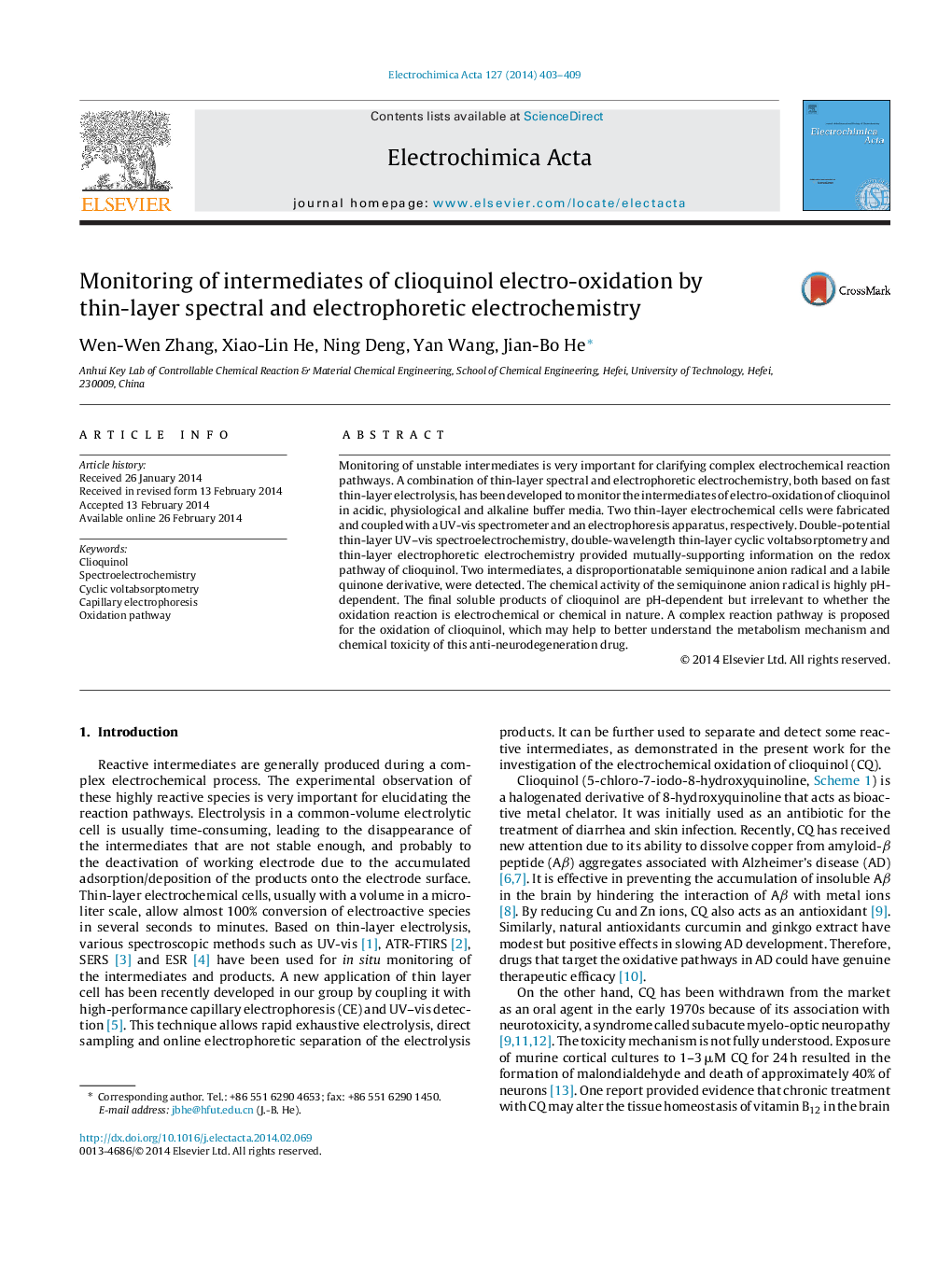| Article ID | Journal | Published Year | Pages | File Type |
|---|---|---|---|---|
| 186177 | Electrochimica Acta | 2014 | 7 Pages |
•A combination of thin-layer spectral and electrophoretic electrochemistry.•Four products including two intermediates were separated by electrophoresis.•Disproportionation was followed by double-wavelength cyclic voltabsorptometry.•A complex EC mechanism is proposed for oxidation of clioquinol.
Monitoring of unstable intermediates is very important for clarifying complex electrochemical reaction pathways. A combination of thin-layer spectral and electrophoretic electrochemistry, both based on fast thin-layer electrolysis, has been developed to monitor the intermediates of electro-oxidation of clioquinol in acidic, physiological and alkaline buffer media. Two thin-layer electrochemical cells were fabricated and coupled with a UV-vis spectrometer and an electrophoresis apparatus, respectively. Double-potential thin-layer UV–vis spectroelectrochemistry, double-wavelength thin-layer cyclic voltabsorptometry and thin-layer electrophoretic electrochemistry provided mutually-supporting information on the redox pathway of clioquinol. Two intermediates, a disproportionatable semiquinone anion radical and a labile quinone derivative, were detected. The chemical activity of the semiquinone anion radical is highly pH-dependent. The final soluble products of clioquinol are pH-dependent but irrelevant to whether the oxidation reaction is electrochemical or chemical in nature. A complex reaction pathway is proposed for the oxidation of clioquinol, which may help to better understand the metabolism mechanism and chemical toxicity of this anti-neurodegeneration drug.
Graphical abstractFigure optionsDownload full-size imageDownload as PowerPoint slide
